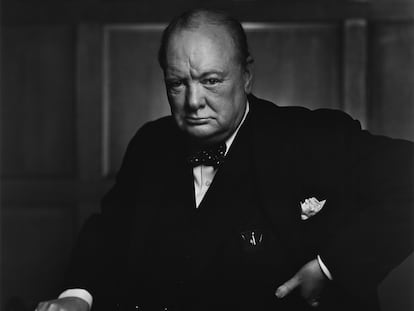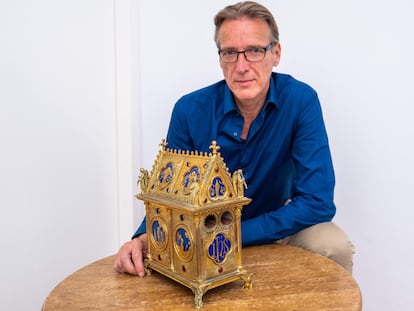Winston Churchill’s most iconic portrait stolen in Canada
Thieves swap ‘The Roaring Lion’ picture for a copy in an Ottawa hotel


Police are investigating the theft of one of the most famous portraits of Winston Churchill. Photographed in 1941 and dubbed “The Roaring Lion,” it had been on display since 1998 in the Fairmont Château Laurier hotel in downtown Ottawa (Canada). On August 19, hotel employees noticed that it had been replaced by a copy – the portrait frame did not match the other five portraits in the hotel lounge. Experts later determined that the photographer Yousuf Karsh’s signature on the portrait copy was a forgery. The portrait’s value has been estimated at US$100,000, although a price is difficult to establish due to its historical significance.
When the hotel and police appealed to the public for help, several personal photos taken by hotel guests showed that the original was there on December 25, 2021. But photos taken 12 days later showed the copy hanging in its place. The hotel’s general manager, Geneviève Dumas, told The Canadian Press that special tools are needed to detach the frame from the wall, so it must have been stolen by a professional. “The thief knew what he was doing,” said Dumas.
The photograph was taken on December 30, 1941, after Winston Churchill’s speech to the Canadian parliament. The image was featured on the cover of Life magazine in May 1945, and has been on the back of England’s £5 note since 2016. The iconic photo of the British prime minister was taken by Yousuf Karsh (1908-2002), an Armenian-born Canadian photographer renowned for his portraits of 20th century luminaries, including Albert Einstein, Queen Elizabeth II, Pablo Picasso, Grace Kelly, Martin Luther King, Helen Keller and Mohamed Ali.
On that winter day in 1941, Winston Churchill thanked all Canadians for their dedication to “the total and final extirpation of the Hitler tyranny, of the Japanese frenzy, and the Mussolini flop.” After the speech, Churchill agreed to have his photograph taken in another room of the legislative chamber. According to Karsh, when Churchill refused to part with his trademark cigar, he leaned over the camera and plucked the cigar from his mouth. “He looked so belligerent; he could have devoured me. In that instant, I took the photograph,” said Karsh.
“The Roaring Lion” portrait brought Yousuf Karsh international renown. He lived for 18 years in one of Fairmont Château Laurier hotel rooms, and six of his photos were permanently on exhibit in one of the hotel lounges. When the theft of the Churchill portrait was discovered, the other five works by Karsh were removed to a more secure location. A police investigation is ongoing, and Geneviève Dumas is asking potential buyers to be on alert. “Is someone trying to sell you a photograph of Winston Churchill? Well, maybe it’s the one that disappeared from our hotel.”
Tu suscripción se está usando en otro dispositivo
¿Quieres añadir otro usuario a tu suscripción?
Si continúas leyendo en este dispositivo, no se podrá leer en el otro.
FlechaTu suscripción se está usando en otro dispositivo y solo puedes acceder a EL PAÍS desde un dispositivo a la vez.
Si quieres compartir tu cuenta, cambia tu suscripción a la modalidad Premium, así podrás añadir otro usuario. Cada uno accederá con su propia cuenta de email, lo que os permitirá personalizar vuestra experiencia en EL PAÍS.
¿Tienes una suscripción de empresa? Accede aquí para contratar más cuentas.
En el caso de no saber quién está usando tu cuenta, te recomendamos cambiar tu contraseña aquí.
Si decides continuar compartiendo tu cuenta, este mensaje se mostrará en tu dispositivo y en el de la otra persona que está usando tu cuenta de forma indefinida, afectando a tu experiencia de lectura. Puedes consultar aquí los términos y condiciones de la suscripción digital.
More information
Últimas noticias
Most viewed
- Alain Aspect, Nobel laureate in physics: ‘Einstein was so smart that he would have had to recognize quantum entanglement’
- The US bombing of Venezuela, in pictures
- Oil, gold and rare earth elements: the backdrop to US political tension with Venezuela
- Maps of the US attack on Venezuela: Targets, airspace and deployed fleet
- Delta Force, the elite US military unit that captured Maduro










































